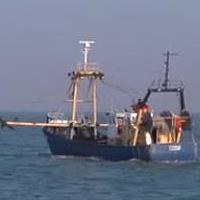(BRUSSELS) – MEPs and ministers struck a deal Thursday to ban fishing in the North-East Atlantic below a depth of 800 meters. The ban applies to bottom trawling and restricts deep-sea fishing to where it took place between 2009 and 2011.
Negotiators agreed a depth limit of 800 metres, with the aim of protecting the fragile vulnerable marine ecosystems of the deep sea bed.
A separate provision for protecting the Vulnerable Marine Ecosystems (VME) was added to the regulation, whereby for deep sea fishing activities below 400 metres if the quantity of VME indicators (detailed list annexed to the regulation) caught exceeds certain thresholds (defined in the new regulation) the vessel would need to immediately stop all fishing operations and resume only when it has reached an area at least five nautical miles away from the area it encountered VME.
The EU will freeze the “footprint”-area where deep sea fishing activities took place- in EU waters in the North-East Atlantic to the area where deep-sea fishing took place in 2009-2011. This will apply to vessels targeting deep sea species; i.e. those whose deep sea species catch makes up more than 8% of the total on at least one fishing trip during the year.
There will be obligations to provide public information on EU vessels targeting deep-sea species and to report all catches (fish and vulnerable ecosystems). Member states will also be required to provide information on the location of vulnerable ecosystems (impact assessments) and the Commission will assess this data annually and adapt the allowed fishing area accordingly (using implementing acts).
20% of EU vessels will need to have an observer (scientist) on board to ensure the collection of timely and accurate data.
The informal agreement now has to be endorsed by the Parliament’s Fisheries Committee as well as the Council. The plenary vote is foreseen for November.
EU vessels targeting deep-sea species are French, Spanish, Portuguese, Irish British, or German.
Further information, European Parliament



